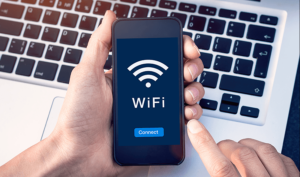One of the most common questions when it comes to smartphone batteries is how much should you charge your phone and what percentage should you maintain the battery at. With smartphones becoming an essential part of our daily lives, it’s no surprise that people want to know how to maximize the life of their phone’s battery.
The short answer to this question is that it’s not necessary to charge your phone to a specific percentage or maintain it at a certain level. Modern smartphones have advanced battery management systems that ensure your phone’s battery is protected and optimized for maximum performance.
However, there are a few things you should keep in mind to ensure that you’re taking care of your phone’s battery properly. In this article, we’ll discuss the best practices for charging your phone’s battery and maintaining its health over the long term.
Understanding Lithium-Ion Batteries
Before we dive into the specifics of charging your phone’s battery, it’s essential to understand the basics of lithium-ion batteries. Lithium-ion batteries are commonly used in smartphones, laptops, and other portable electronic devices. These batteries use a chemical reaction to store and release energy.
When you charge a lithium-ion battery, a current flows from the charger into the battery, causing lithium ions to move from the cathode to the anode. When you use your phone, the opposite reaction occurs, and the lithium ions move from the anode to the cathode, producing an electrical current that powers your phone.
One of the most significant advantages of lithium-ion batteries is that they have a high energy density, which means they can store a lot of energy in a relatively small space. However, they also have some limitations, including a limited number of charge cycles and a tendency to degrade over time.
Charge Cycles
A charge cycle is one full charge of the battery, then full use, and then a recharge. For example, if you charge your phone from 0% to 100% and then use it until it’s completely discharged, that would count as one charge cycle.
Lithium-ion batteries have a limited number of charge cycles, typically around 300-500 cycles, after which they will start to degrade and lose capacity. It’s important to note that a charge cycle is not the same as charging your phone from 50% to 100% twice. Two partial charges do not equal one full charge cycle.

Battery Degradation
Over time, lithium-ion batteries will naturally degrade, and their capacity will decrease. This is due to a variety of factors, including the number of charge cycles, the temperature, and the amount of time the battery spends at a high state of charge.
One of the most significant factors that contribute to battery degradation is keeping your phone at a high state of charge for an extended period. When a lithium-ion battery is kept at 100% charge for an extended period, it can cause the battery to degrade faster.
Best Practices for Charging Your Phone’s Battery
Now that you understand the basics of lithium-ion batteries, let’s discuss some best practices for charging your phone’s battery.
- Charge Your Phone When it’s Convenient
There’s no need to worry about charging your phone to a specific percentage or maintaining it at a certain level. Charge your phone whenever it’s convenient for you to avoid letting the battery drain completely. Modern smartphones are designed to manage the charging process automatically and will stop charging when the battery reaches 100%.
- Avoid Keeping Your Phone at 100% Charge
While there’s no need to worry about charging your phone to 100%, it’s best to avoid keeping your phone at 100% charge for an extended period. If you’re going to be away from your phone for an extended period, it’s best to charge it to around 80% and then turn it off.
- Use a High-Quality Charger and Cable
Using a high-quality charger and cable is essential for the health of your phone’s battery. Cheap chargers and cables may not provide a consistent and stable current, which can damage your battery over time. It’s best to use the charger and cable that came with your phone or purchase a high-quality replacement.
- Avoid Extreme Temperatures
Extremely high or cold temperatures can also affect the life of the battery, so you should not leave the battery in places where the temperature is too high, or leave the phone in the car. Similarly, don’t use your phone in extreme cold temperatures. If you must use your phone in cold weather, keep it warm in your pocket or use a phone case designed to keep your phone warm.
- Don’t Let Your Phone’s Battery Die Completely
It’s best to avoid letting your phone’s battery die completely. When a lithium-ion battery is discharged completely, it can cause irreversible damage, reducing its overall capacity. Try to keep your phone’s battery level between 20% and 80% for optimal battery health.
- Use Battery-Saving Features
Most modern smartphones have battery-saving features that can help to extend your phone’s battery life. These features may include a low-power mode that reduces your phone’s performance and background activity to conserve battery life. You can also adjust your phone’s brightness, turn off location services, and close apps when you’re not using them to save battery life.
- Turn off Your Phone While Charging
While it’s safe to use your phone while it’s charging, turning it off can help to reduce the amount of heat generated by the battery during the charging process. Heat can cause your phone’s battery to degrade faster, so reducing heat generation can help to extend your phone’s battery life.
Conclusion
In conclusion, there’s no need to worry about charging your phone to a specific percentage or maintaining it at a certain level. Modern smartphones have advanced battery management systems that ensure your phone’s battery is protected and optimized for maximum performance. However, there are some best practices you can follow to ensure that you’re taking care of your phone’s battery properly. These include using a high-quality charger and cable, avoiding extreme temperatures, using battery-saving features, and turning off your phone while charging. By following these best practices, you can help to extend your phone’s battery life and ensure that it continues to perform well over the long term.










